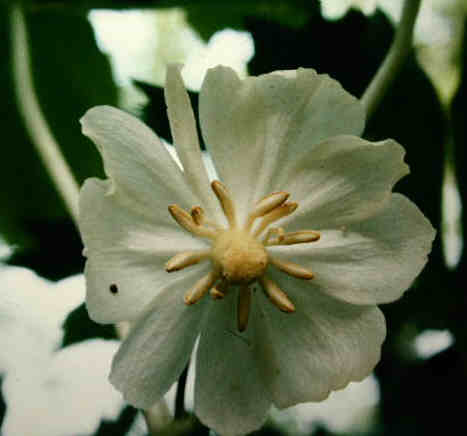| 03-25-02
(written in 2002)
Snow or no! At this time of year Hoosier outdoor folks start thinking
about mushroom hunting. And the question I hear most often is: "WHEN?"
My answer is simple: Mushrooms (especially morels) are just like bass
and many other natural delicacies; they are where and when you find them.
When I get pinned down on this subject, I point out that the earliest
mushroom finds I have ever heard about (not mine), were found on March
27 in the southern part of the state.
But I do not fail to point out that morels--especially the little grays
and waxy caps--might be found any time now . . . if we get some warm air
temperatures and sunshiny days.
At this time of year, I look for the little grays and waxy caps along
sparsely wooded stream banks and wooded hillsides with a southern exposure.
Fence rows along the south side of wood lots are good bets.
However, it would be remiss if I did not point out that unsuccessful
mushroom hunts at this time of year far outnumber successful efforts. We
all go out several times at this time of year before we find that first
morel.
However, those first unfruitful hunts can be turned into pluses--even
by the neophyte "moreller"--if they are used to learn where to look when
the time is ripe.
This can mean learning to identify many types of morel habitats. For
example, a gently sloped forest setting in which the trees are small, but
large enough to provide decaying foliage that turns into humus below last
year's dry leaves. The best thing a new morel hunter can do on early hunts
is learn to identify trees by observing their bark from a distance.
The popular theory that dead Dutch elm trees with "slipping" bark generate
morels is quite accurate, but such trees also can be just as unreliable.
I find a lot of morels around dead elm trees with slipping bark, but I
also fail to find morels at such popular places. Still, it is important
to be able to identify a dead elm at a distance (slipping or sound bark),
and to check out every one of them.
An important thing to remember about looking for morels around dead
elm trees revolves around the fact that size of the tree is not a factor.
I have found morels around dead elms with trunks that were more than
two feet in diameter, but I also have found lots of morels around dead
elms that were no larger than my thumb.
No dead elm is too large, no dead elm is too small to attract my attention.
If I had to choose between dead elms that are smaller than four inches
in diameter and dead elms that are larger than four inches, I would take
the smaller trees because there are more of them.
Recognizing dead elm trees is just a starting point. Other species can
be just as important, especially ash, poplar (tulip tree, our state tree),
beech, sycamore, and thick conifers like the white pine, especially
in the strip-mined county of the southwestern part of the state.
In short, it would seem that the best morel-hunting advice I can give
you is to learn to identify trees.
MOREL QUESTION: Are patches of May-apples
good places to find morels?
ANSWER: If I had tried to answer
that question a few years back I would have emphatically said NO!
For many years I told myself and hundreds--even thousands--of morel
hunters that morels did not grow in patches of May-apples. But one day
a few years back while approaching a patch of this interesting plant, I
smugly told myself: "MORELS DO NOT GROW AROUND MAY-APPLES!"
Ten feet from the edge of the May-apple patch, I was stopped cold in
my tracks by the sight of a "big yaller" growing smack under a May-apple.
Since that time, when I approach a May-apple patch, I flat-belly-down
on the forest floor to confirm my stupidity.
If I don't find morels, it is not a bad way to rest, notwithstanding
the fact that it often fills my eyeballs point blank with one of our most
beautiful wildflowers--that of the May-apple.
INCIDENTAL INTELLIGENCE: The flower
of the May-apple (shown below) develops on a cream colored stem that emerges
from the fork of the plant. Plants that do not fork do not bloom, and consecuenly
do not produce the egg-shaped fruit that reminds me of a lemon, but is
only one third the lemon's size. The fruit, when fresh and juicy, can be
used to create a lemonade-like drink, or it can be sliced and sauteed for
food, neither being especially tasty . . . The May-apple "corkscrews" it
way up through the humus of the forest (or even earth) early on in the
spring (about now) with its leaves wrapped tightly around the stem . .
. Once clear of the forest floor, the two deeply-lobed, umbrella-like leaves
cover the stem of the plant and eventually the bloom and fruit.

Click
on image for enlarged view.
|

